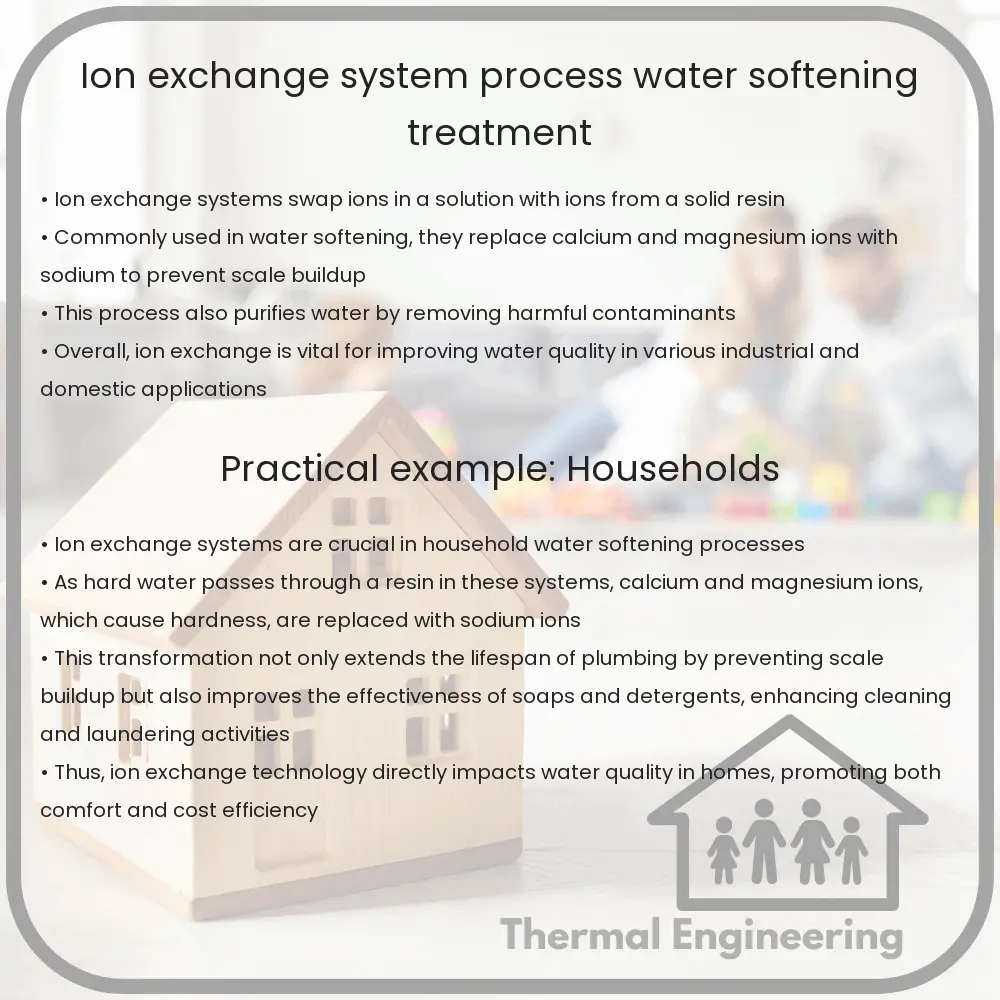Learn about ion exchange systems, their roles in water treatment, softening, and purification, and how they function through cation and anion exchanges.

Understanding Ion Exchange Systems
An ion exchange system is a vital tool in the world of water treatment and softening. This technology utilizes a process where ions are exchanged between a solution and an ion exchange material. It is widely used for water purification, chemical recovery, and to treat water hardness. In this article, we’ll explore how ion exchange systems work, their applications, and the benefits of their use.
The Process of Ion Exchange
At its core, ion exchange is a reversible chemical reaction where ions are swapped between a solid substance (ion exchanger) and a liquid (water). The ion exchange material commonly comes in the form of small resin beads that are composed of organic polymers capable of releasing certain ions into the liquid and absorbing others.
Types of Ion Exchange
- Cation Exchange – Cations (positively charged ions) in the water are replaced with hydrogen (H+) or sodium (Na+) ions. Used primarily for water softening and pH adjustment.
- Anion Exchange – Anions (negatively charged ions) are exchanged for hydroxide (OH–) ions, which combine with H+ from cation exchange to form water (H2O). This process is useful in demineralizing water.
Water Softening Through Ion Exchange
One of the most common applications of ion exchange is water softening. Hard water contains high levels of calcium (Ca2+) and magnesium (Mg2+) ions, which can cause scaling in pipes and inefficiency in detergents. In a water softening ion exchange system, hard water passes through a resin that is charged with sodium ions. The calcium and magnesium ions in the water are replaced by the sodium ions from the resin, resulting in softer water.
Key Benefits and Applications
- Improved Water Quality – Reduces hardness, removes contaminants like iron, manganese, and arsenic, and minimizes scale buildup in plumbing systems.
- Industrial Applications – Used in a variety of industries for boiler feed water treatment, in chemical production, and metal extraction processes.
- Waste Water Treatment – Helps in the recovery of valuable minerals from wastewater and reduces pollutants before discharge.
Considerations in Ion Exchange System Design
Designing an effective ion exchange system requires careful consideration of several factors:
- Water Chemistry – Understanding the specific contaminants and the total ionic content of the water is essential.
- Resin Type – Selection between cationic and anionic resins or mixed-bed resins based on the application.
- Regeneration Process – The method and frequency of regenerating the resin with a high concentration of a salt solution, typically sodium chloride (NaCl) for softening applications.
- System Capacity – The size and flow rates must be matched to the facility’s needs.
Ion exchange is a sophisticated yet simple method for improving water quality, facilitating various industrial processes, and contributing to environmental sustainability. By understanding its process, applications, and design considerations, stakeholders can better implement and benefit from this technology.